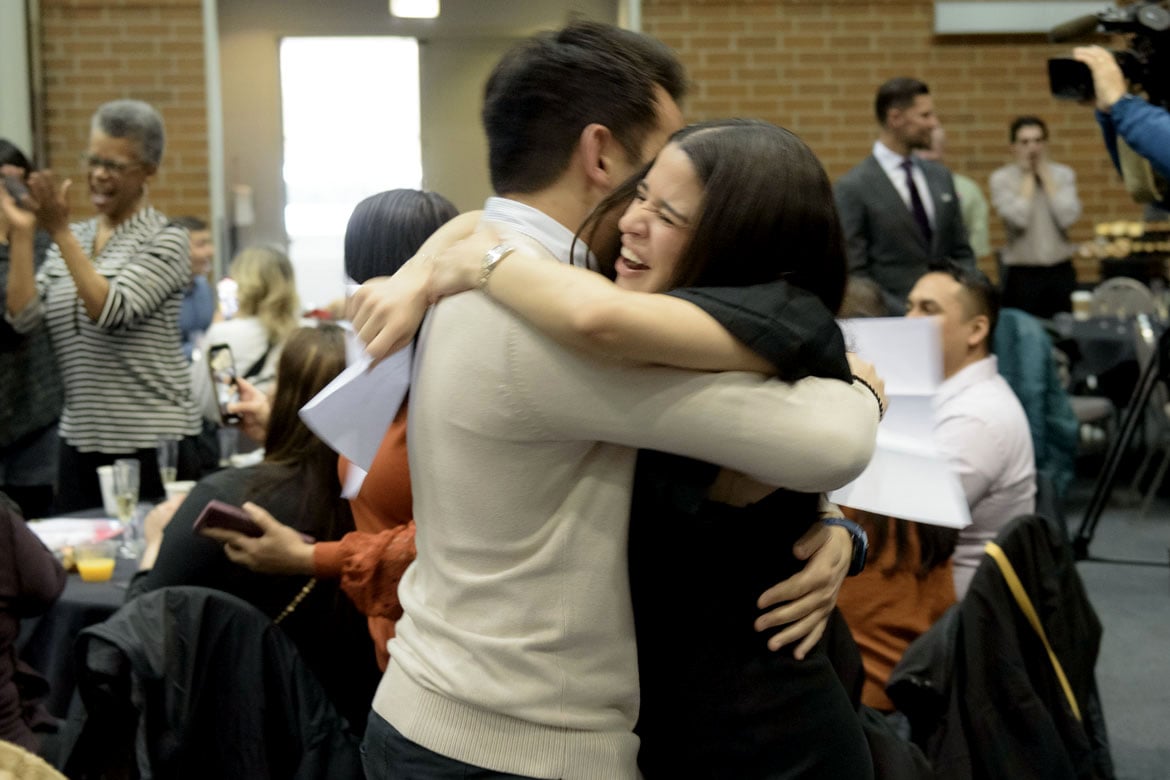What’s the news: Following a trend observed for half a decade, the 2023 Main Residency Match again broke a record for offering the largest number of total positions in the program’s 70-year history: 40,375 certified spots.
That’s an increase of 1,170 positions over 2022, adding to a 14.8% rise over the past five years. Almost half of those positions were in primary care. There were also 183 more programs participating in the Match this year.
Data shows 81.1% of all active applicants matching for medical residency postgraduate year 1 (PGY-1) positions and 93% of these positions were filled.
There were 42,952 applicants who certified a rank order list, the highest number on record and an increase of 403 applicants compared to 2022. Among that group, 34,822 matched to a PGY-1 position, a 1 percentage-point increase over last year.
The 48,156 total applicants registered for the 2023 Main Residency Match marked 481 more registrants than the previous year. Non-U.S. citizen international medical graduates (IMGs) primarily drove the increase with 707 more non-U.S. citizen IMG applicants and 153 more U.S. DO seniors this year compared to 2022.
Surprisingly, Match officials said, there were 246 fewer U.S. MD seniors who registered for the Match this year compared with last year. There were 19,748 U.S. MD seniors this year compared with 19,902 last year.
Why it’s important: Given concern about physician shortages, more positions being offered will help to begin to fill that anticipated gap. Match rates increased among nearly all applicant types. When compared with 2022 Main Residency Match numbers, this year’s U.S. MD seniors had a 93.7% Match rate, an increase of 0.8 percentage points. This group has held steady with a 92–95% Match rate since 1982. U.S. DO seniors saw a 91.6% Match rate, an all-time high figure and a 0.3 percentage-point increase over last year.
“We are extremely proud of the DO graduating Class of 2023 and the dedication, flexibility and determination they displayed as they navigated the ever-changing landscape and challenges they faced during their four years of medical school,” said Robert A. Cain, DO, president and CEO of the American Association of Colleges of Osteopathic Medicine.
“I am particularly pleased that as we see the numbers of DO seniors increase, we are also seeing the number of matches increase,” Dr. Cain added. “This is a testament to the talent and abilities of our seniors and also the teaching and training they are receiving at our colleges of osteopathic medicine. The entire osteopathic community can be proud of this continued growth and success.”
U.S. citizen IMGs, meanwhile, had a 67.6% Match rate, also an all-time high and a 6.2 percentage-point increase over last year. Non-U.S. citizen IMGs had a 59.4% Match rate, 1.3 percentage points higher than last year. Fill rates also remained high this year. Among all positions offered, 37,690 were filled during the 2023 Main Residency Match, for a 93.3% fill rate. That represents a drop of less than 1 percentage point from 2022.
Among the 37,425 PGY-1 positions, which includes preliminary and transitional year positions, there was a 93% fill rate. The fill rate for categorical positions—positions that provide the full training required for specialty board certification—was 97.5% this year.
Of the 6,270 total certified programs, 5,431 filled during the Match for a rate of 86.6%. That’s a drop of 1.6 percentage points compared with last year.
Of note, there were an additional 571 positions in primary care, allowing for an all-time high number of positions to be offered at a time when the nation faces a serious and growing shortage of primary care physicians. The figure marks a 3.2% increase over last year and a 17% increase over the past five years, as the numbers have climbed in each of those years.
The primary care positions filled at a rate of 94.2%, which remained steady from last year.
“The 2023 Main Residency Match proved once again to be a highly successful Match with outstanding results for participants. We were excited to see the record number of primary care positions offered in this year’s Match and how the number of positions has consistently increased over the past five years, and most importantly, the fill rate for primary care has remained steady,” said Donna L. Lamb, president and CEO of the National Resident Matching Program, which administers the Match and makes available advanced data about it.
Orthopaedic surgery, plastic surgery (integrated), radiology—diagnostic, and thoracic surgery were the specialty programs with 30 positions or more that filled all of the available positions.
Emergency medicine offered 3,010 of its positions—89 more than last year—but 554 unfilled positions remain after the Match. That’s 335 more unfilled positions than last year. Match officials believe that is “driven in part by the decreased number of U.S. MD and U.S. DO seniors who submitted ranks for the specialty” and that it “could reflect changing applicant interest or projections about workforce opportunities post-residency.”
In a joint statement, emergency medicine physician organizations said that with the recent pandemic and results in the last two Matches, it is a challenging time for the specialty. The organizations are working to ensure that medical students fully understand the specialty by proactively showcasing the advantages of emergency medicine careers and addressing negative perceptions.
“We affirm our responsibility and commitment to engage actively,” says the statement from the American College of Emergency Physicians and 10 other organizations. The specialty “continues to attract talented and dedicated students and remains one of the most popular specialties for students,” and they expressed confidence that unfilled positions would be filled “with terrific new residents” through the Supplemental Offer and Acceptance Program (SOAP).
Match officials said data can show the competitiveness of specialties when measured by the percentage of positions filled overall and the percentage of positions that U.S. MD and DO seniors fill. Specialties with 30 positions or more that filled with the highest percentage of U.S. MD and DO seniors in the 2023 Match were:
- Plastic surgery (integrated): 92.3%.
- Internal medicine–pediatrics: 90.5%.
- Obstetrics and gynecology: 90.1%.
- Orthopaedic surgery: 90%.
Applicants who did not match to a residency position through the Main Residency Match had the opportunity to take part in SOAP. This year, 2,685 positions were unfilled after the matching algorithm was processed—423 more positions and an 18.7% increase over last year. SOAP results will be available in the full Match report scheduled to be published in the spring.
Learn more: The AMA Thriving in Residency series has guidance and resources on navigating the fast-paced demands of training, maintaining health and well-being, handling medical student-loan debt, and other essential tips about succeeding in graduate medical training. Subscribe today to join our mailing list and never miss a story.
Also, find out how the AMA Resident and Fellow Section gives voice to, and advocates for, the issues that affect resident and fellow physicians.
If neither Match nor SOAP landed you the residency position you were hoping for, check out this great advice about three things to do if you don’t match.
If you are preparing for next year’s Match, check out the AMA Road to Residency series, which provides medical students, international medical graduates and others with guidance on preparing for residency application, acing your residency interview, putting together your rank-order list and more.





